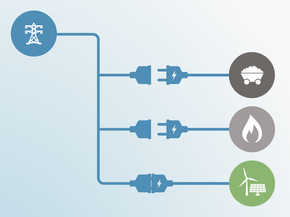Assumptions
Note
Note: We have updated the text assessment to reflect the latest policy developments in Saudi Arabia. The CAT’s ratings and data is from our 2023 evaluation and will be updated soon.
Historical emissions
Historical emissions from 1990 to 2022 are taken from PRIMAP National Greenhouse Gas Emission Database 2023 (Gütschow and Pflüger, 2023). Saudi Arabia’s own national inventory data from the UNFCCC only extends to 2012.
LULUCF values for 1990, 2000, 2010 and 2012 are still taken from the UNFCCC emissions inventory (2018).
NDC and other targets
2021 NDC
As Saudi Arabia has not communicated the business as usual (BAU) scenario for its NDC target, we quantified the target based on a business-as-usual scenario developed by the King Abdullah Petroleum Studies and Research Center (KAPSARC). The lower end of the NDC range reflects the KAPSARC BAU scenario, excluding land use, land use change and forestry (LULUCF). For the upper end of the range, we have assumed that LULUCF measures would contribute 200 MtCO2e of the total 278 MtCO2e emissions reductions in the NDC. This number is based on the announcements made at the Saudi Green Initiative Forum in 2021 (Kingdom of Saudi Arabia, 2021d). In 2012, the latest year for which national data is available, the land use and forestry sink stood at just 9 MtCO2e, with forests covering a mere 0.5% of Saudi Arabia’s total land area in 2020.
The Global Warming Potential (GWP) values used for the NDC have not been communicated. We have assumed these to be expressed in either AR4 or SAR and have included both calculations in our range.
Current policy projections
We use a business-as-usual (BAU) emissions scenario developed by the King Abdullah Petroleum Studies and Research Center (KAPSARC) for the upper end of our current policy projections (KAPSARC, 2021), adjusted to our latest historical data. Given the slow progress on renewable energy deployment and the lack substantial mitigation policies in other sectors, we estimate the BAU scenario to reflect current developments. The BAU scenario assumes 11 TWh of electricity generated with solar PV by 2030, which we estimate would translate to around 5–6 GW of solar PV capacity by 2030. Given that only 0.4 GW of renewable energy capacity had been installed by end of 2022 (IRENA, 2023), and that only few projects have been tendered since then, 5–6 GW of renewable capacity by 2030 is broadly in line with the current pace of deployment.
For the lower end of our current policy scenario, we take the above BAU scenario but replaced it with CO2 emissions provided in KAPSARC’s latest baseline forecasts of carbon dioxide emissions (KAPSARC, 2023a). We then adjusted the results to our latest historical data.
Planned policy projections
We use KAPSARC’s renewable energy scenario (“2030 MEIM RE target”) scenario for the upper end of our planned policies scenario (KAPSARC, 2021), adjusted to our latest historical data point. This scenario translates to about a 30% share of renewable energy in total electricity production by 2030. We estimate a 30% share of renewable energy to be roughly in line with the former (2019) Vision 2030 target of installing 57.8 GW of renewable energy by 2030.
The lower end of our planned policy projections reflects the 50% renewable energy and 50% natural gas in electricity production by 2030, as foreseen in the 2021 NDC and the Vision 2030 targets from October 2021. To do so, we calculate the difference in electricity sector emissions resulting from KAPSARC’s renewable energy scenario and the new NDC target of 50% natural gas and renewable energy, and subtract it from the upper end of our planned policies range.
Net-zero target and other long-term targets
The Saudi government has announced it aims to achieve a sink of 200 MtCO2 from 2030 onwards, which we assume to stay constant towards 2060 to meet Saudi Arabia’s net-zero CO2 target.
Given the lack of information on Saudi Arabia’s net zero target announcement, we have assumed it aims to reach net zero CO2 emissions by 2060.
We assume that CO2 emissions will decline at a linear rate between 2030 and 2060 to balance LULUCF sinks in 2060. We further assume that non-CO2 emissions will decline at a linear rate between 2030 and 2080 in line with the IPCC SR1.5 pathways.
Global Warming Potentials values
The CAT uses Global Warming Potential (GWP) values from the IPCC's Fourth Assessment Report (AR4) for all its figures and time series.
Further analysis
Latest publications
Stay informed
Subscribe to our newsletter






